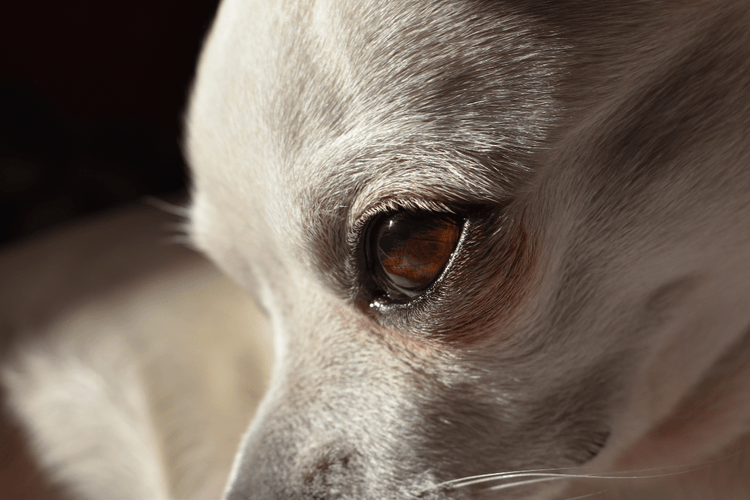
Strabismus in Dogs
Strabismus is misdirection of the eye. Instead of pointing forward in a direction parallel to the nose, the eye is turned either inward towards the dog’s nose (esotropia) or outward away from the nose (exotropia). Strabismus may be caused by an abnormality in the muscles behind the eye, or in the nerves that control those muscles. With strabismus, only the direction of the eye is changed, the position of the eye within the orbit (eye socket) is usually normal.
Strabismus may be present in only one eye, or it can occur in both eyes. When both eyes are involved and the eyes are turned to the outside, the strabismus is called divergent. When the eyes are both turned towards the nose and are cross-eyed, the strabismus is called convergent. The eyes may also be deviated downward or upward.
Strabismus can occur in animals of all ages. It may be present at birth and reflect abnormalities in the development of the eye, the muscles of the eye, or the brain. Or strabismus may develop later in life. The onset of strabismus in an adult animal that was previously normal can represent a serious problem behind the eye.
Causes of Strabismus in Dogs
- Congenital (present at birth) strabismus
- Hydrocephalus (water on the brain), especially in puppies
- Certain toxins causing paralysis of the nerves, such as botulism and tick paralysis
- Inflammation of the nerves from diseases such as coon hound paralysis (polyradiculoneuritis), diseases of the inner and middle ear, or the center of the brain that coordinates eye movement
- Trauma, inflammation or scarring of the extraocular muscles
- Cancer of the brain or nerves to the eye
Canine Strabismus: What to Watch For
- One or both eyes are pointed in an abnormal direction.
- The movement of the two eyes may not be coordinated or one eye may fail to move properly.
- Other neurologic signs may be noticeable, such differences in pupil size, weakness or difficultly walking, tilting of the head to one side, falling or turning to one side.
- Possibly mental dullness or seizures
- Possibly lethargy and decreased appetite
Diagnosis of Strabismus in Dogs
Complete physical, neurologic, and ophthalmologic examinations are indicated to determine whether the problem is an eye problem or a neurological problem. Diagnostic tests include the following:
- Complete ophthalmic examination including testing of pupillary light reflexes, Schirmer tear test, fluorescein staining of the cornea, tonometry to measure the pressure within the eye, and examination of the interior of the eye under magnification. Of particular importance is the testing of reflexes for the nerves of the eye and the head. Your veterinarian may refer your dog to a veterinary ophthalmologist for further evaluation using specialized instrumentation.
- Complete neurologic examination including testing of various reflexes, observing the animal move about the exam room, and detailed examination of the ears. Your veterinarian may refer your dog to a veterinary neurologist for further evaluation using specialized instrumentation.
Once strabismus is diagnosed in your dog, an extensive search is often required to identify any underlying diseases. Tests to be considered include the following:
- Complete blood count (CBC)
- Biochemical profile
- Urinalysis
- Blood tests for certain infectious diseases
- Skull X-rays
- X-rays of the chest to look for metastatic tumors
- Possibly advanced imaging tests of the brain and eye, such as CT scan or MRI
Treatment of Strabismus in Dogs
Treatment is aimed at correcting the underlying cause of the problem, so it is important to reach a specific diagnosis if at all possible. Some causes of strabismus affect only the eye and are not life threatening, while other causes indicate a serious underlying neurologic or systemic problem that requires prompt medical attention.
Home Care and Prevention for Dogs with Strabismus
There is no way to prevent the development of strabismus. When the strabismus is due to a neurologic problem that affects the middle or inner ear, or area of the brain that coordinates movement, then your dog may also experience severe dizziness (vertigo). Protect him from falling, rolling or otherwise hurting himself.
Strabismus that is a congenital (present at birth) may require periodic monitoring through out the dog’s life. If your pet was normal before and suddenly develops strabismus, seek medical attention promptly.